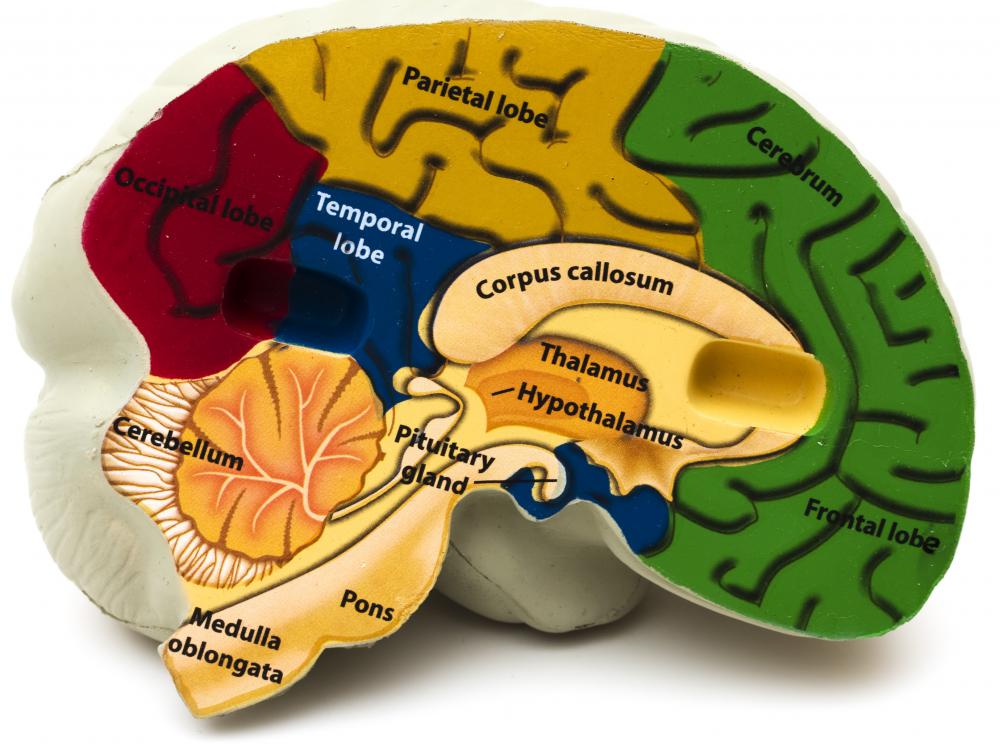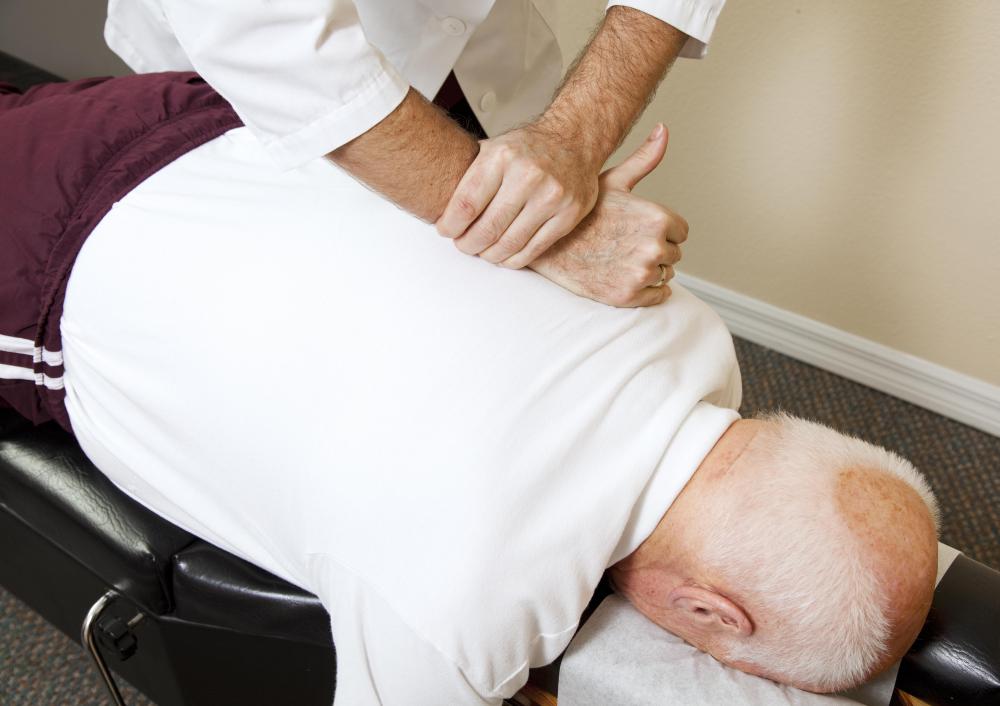At WiseGEEK, we're committed to delivering accurate, trustworthy information. Our expert-authored content is rigorously fact-checked and sourced from credible authorities. Discover how we uphold the highest standards in providing you with reliable knowledge.
What is Dysmetria?
Dysmetria is a lack of coordination of body movement, in which a person seems to over or underestimate distance with the eyes, hands, or legs. The condition is often not just a motor dysfunction, but a cognitive one. Hypermetria is the overshooting of distance, such as when a person reaches farther than intended, while hypometria is the undershooting of distance.
The cerebellum is the portion of the brain responsible for motor coordination, and if it or any of its neural pathways are damaged, dysmetria can result. The cerebellum receives visual and spatial information from the eyes, and sends out corresponding motor information to the limbs. Dysmetria is caused by lesions on the cerebellum, or in the nerves connected to the cerebellum, and is often associated with other cognitive disorders of the cerebellum, including such symptoms as language impairment and problems with reasoning and memory. Associated disorders include amyotrophic lateral sclerosis (ALS), autism, autosomal dominant spinocerebellar ataxia (SCA), multiple sclerosis (MS), schizophrenia, and stroke.

Motor dysmetria occurs when a person is unable to correctly interpret the position of his or her extremities in space. It is often characterized by the inability to perform rapid tapping movements or other coordinated movements of the extremities. Saccadic dysmetria is characterized by abnormal eye movements, including twitches of the eye while at rest. Ocular dysmetria is characterized by problems with gaze and focus, over or underestimating distance with the eyes.

The first step in diagnosing dysmetria is usually a simple hand-to-nose test, in which the the physician holds a finger up before the patient, and patient is asked to touch the physician's finger, and then his or her own nose, several times. Similar tests can be used to examine coordinated movement of the arms and legs. If such tests suggest motor problems, magnetic resonance imaging (MRI) can be used to locate lesions in the brain and make a firmer diagnosis.
Since dysmetria is a symptom, it can only be cured if the underlying cause is cured. In most cases, a complete cure is not possible. However, the condition can be managed through medications such as Isoniazid and Clonazepam.

More experimental treatments include cannabis and chiropractic neurology. Research is also investigating the utility of rehearsal by eye movement, in which the patient is trained to practice movements with the eye before attempting physical movement. Deep brain stimulation (DBS) can help improve motor skills for patients suffering from multiple sclerosis.
AS FEATURED ON:
AS FEATURED ON:


















Discussion Comments
@sherlock87- Exercise can prevent stroke, but it's not a fail-safe. My great aunt was really active well into her 80s and still suffered a pretty bad stroke several years ago. She recovered somewhat, but her cognition has never been as good. I think that the same probably applies for things like schizophrenia and MS. Exercise and healthy diet can help prevent these things, but especially if you have a genetic predisposition, it could happen anyway.
Research has been showing in recent years that healthy diet and exercise can prevent diseases that relate to dementia, and those can cause symptoms similar to Dysmetria, though probably less pronounced. I wonder, has any research shown that it can prevent the illnesses that cause dysmetria, like multiple schlerosis and stroke?
Post your comments